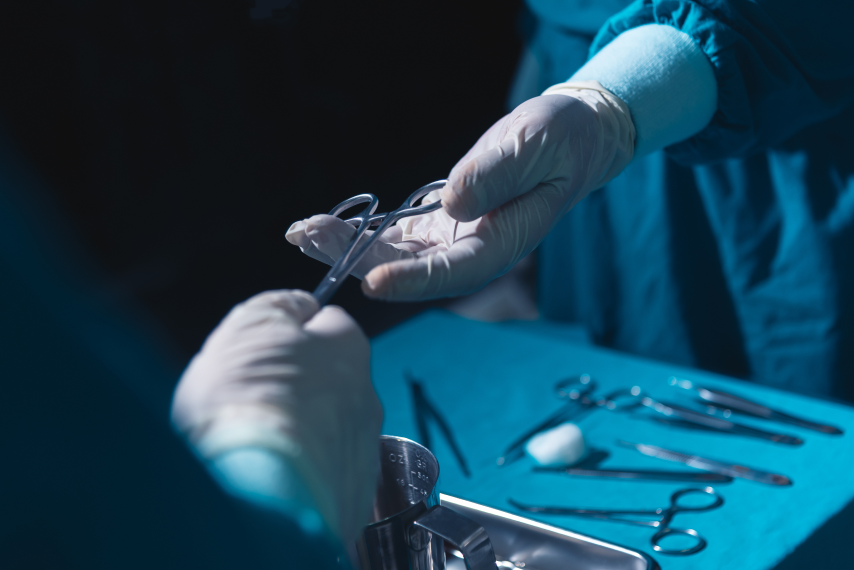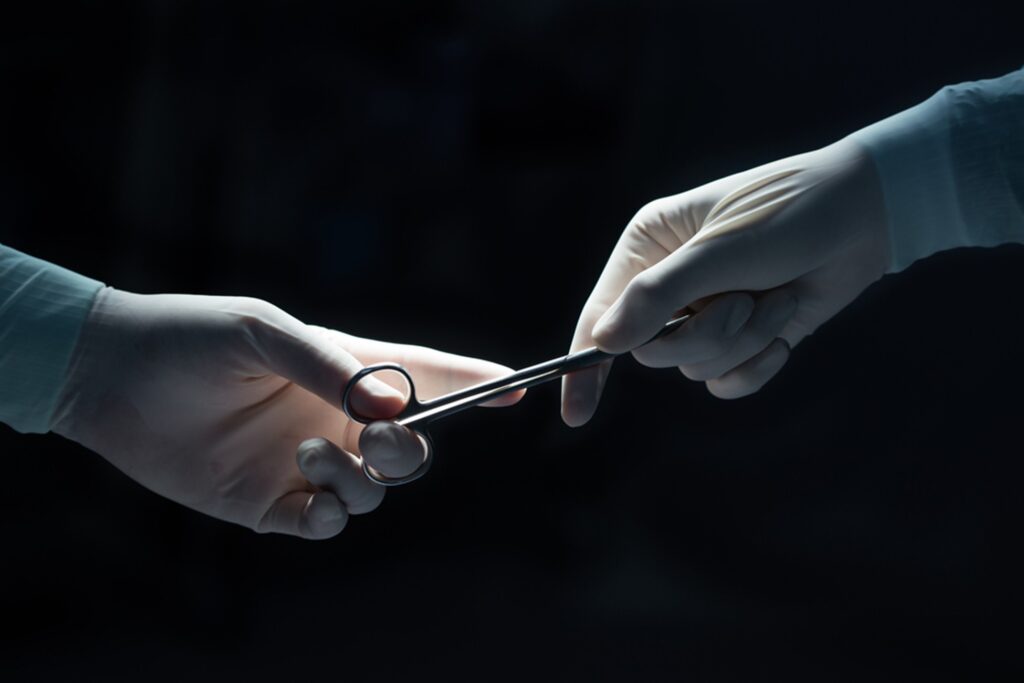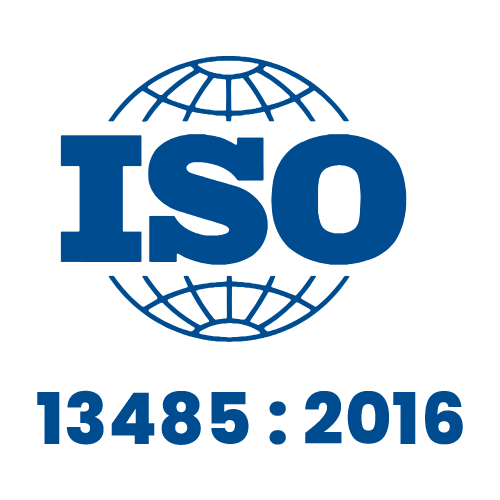In the fast-paced world of surgery, precision and control are paramount. The tools surgeons rely on are not just instruments—they are extensions of their hands, designed to ensure the highest level of care for each patient. In this article, we will explore the indispensable surgical instruments that make modern surgery possible, focusing on their functions and importance in the operating room.
1. Surgical Scissors: The Backbone of Precision Cutting
Surgical scissors are essential for cutting tissues, sutures, and other materials during medical procedures. Each type of scissors is designed to handle specific tissue types and levels of precision, making them indispensable for a variety of surgeries.
Types of Surgical Scissors
- Mayo Scissors: These sturdy scissors are ideal for cutting heavy tissues such as muscles. Available in both curved and straight forms, they are a trusted tool in many procedures.
- Metzenbaum Scissors: Known for their long handles and shorter blades, Metzenbaum scissors are used for cutting delicate tissues, allowing surgeons to make fine, precise incisions.
- Iris Scissors: These small, delicate scissors are commonly used in ophthalmic and plastic surgeries, where precise and intricate cuts are required.
Why are surgical scissors important?
The design of surgical scissors ensures that both rough and delicate cuts can be made, minimizing tissue damage and contributing to faster patient recovery. At Aprikos Medical, we offer a range of surgical scissors crafted for precision and durability.
2. Forceps: Grasping with Control
Forceps are essential during surgery, allowing surgeons to grasp, hold, and manipulate tissues and materials without causing damage.
Types of Forceps
- Adson Forceps: Ideal for handling soft tissues with precision, especially during suturing or other delicate procedures.
- Kelly Forceps: These medium-sized forceps are versatile, often used to clamp larger blood vessels or manipulate dense tissues.
- Dressing Forceps: Used for handling medical dressings or other materials, these forceps are a staple in any surgical kit.
How do surgeons use forceps in surgery?
Forceps give surgeons the ability to manipulate tissues delicately, ensuring the surgical field remains clear and controlled. The precision of Aprikos Medical’s forceps ensures reliability in every procedure.
3. Scalpels: The Surgeon’s Sharpest Tool
Perhaps the most recognizable surgical tool, the scalpel allows surgeons to make clean, precise incisions. Different blades are selected depending on the procedure to ensure minimal trauma to tissues.
What is the function of a scalpel in surgery?
Scalpels provide surgeons with the ability to access internal structures while minimizing tissue damage. At Aprikos Medical, our scalpels are designed for both sharpness and control, ensuring accuracy in every incision.
4. Hemostats (Clamps): Controlling Bleeding
Hemostats are critical for controlling bleeding during surgery. They clamp blood vessels, ensuring a clear surgical field and reducing complications.
Common Hemostats
- Kelly Hemostats: These larger hemostats are essential for clamping major blood vessels, making them indispensable in managing heavy bleeding.
- Mosquito Hemostats: Smaller in size, these are ideal for delicate procedures, allowing for the control of minor bleeding.
- Crile Hemostats: With serrations running the full length of their jaws, these hemostats provide a secure grip, ensuring that vessels remain clamped during the procedure.
How do surgeons stop bleeding during surgery?
Hemostats allow surgeons to clamp blood vessels, preventing excessive bleeding and maintaining a clear operating area. The precision of Aprikos Medical’s hemostats ensures critical control in any surgical procedure.
5. Needle Holders: Ensuring Suturing Accuracy
Needle holders are vital for ensuring secure and accurate suturing. They allow surgeons to maintain a firm grip on the needle, providing precise control during delicate closures.
Types of Needle Holders
- Mayo-Hegar Needle Holder: Versatile and reliable, this needle holder is widely used for suturing in various types of surgeries.
- Castroviejo Needle Holder: Ideal for finer, delicate procedures such as ophthalmic or cardiovascular surgeries, where precision is paramount.
Which medical instruments are used for suturing?
Needle holders are essential for placing sutures accurately and securely, facilitating wound healing. Aprikos Medical provides needle holders designed for precision and ease of use.
6. Curettes: Scraping with Precision
Curettes are small, scoop-shaped instruments used to scrape away tissue during procedures such as biopsies or cleanings.
Types of Curettes
- Uterine Curette: Commonly used in gynecological procedures to remove tissue from the lining of the uterus.
- Bone Curette: In orthopedic surgery, these curettes are used to remove diseased bone, providing precise control without damaging surrounding areas.
Why are curettes important in surgery?
Curettes allow surgeons to remove unwanted tissue with precision, ensuring minimal trauma to surrounding structures. Our curettes at Aprikos Medical are designed for sharpness and control in delicate procedures.
7. Retractors: Opening the Surgical Field
Retractors are used to hold tissues back, allowing surgeons a clear view of the surgical site.
Types of Retractors
- Weitlaner Retractor: A self-retaining retractor, ideal for surgeries that require long periods of exposure.
- Balfour Retractor: Often used in abdominal surgeries, this retractor allows large incisions to remain open, facilitating better access to internal structures.
Why are retractors important during surgery?
Retractors provide surgeons with improved visibility and access, allowing for more precise and efficient procedures. Aprikos Medical’s retractors ensure stable and reliable performance during surgery.
Conclusion: The Importance of High-Quality Surgical Instruments
Surgical instruments are more than just tools—they are crucial for ensuring successful outcomes in the operating room. High-quality instruments, like those provided by Aprikos Medical, enable surgeons to perform procedures with precision, control, and confidence. From scissors to retractors and beyond, our instruments are designed to meet the exacting demands of modern surgery, ensuring the best possible results for both surgeons and their patients.






